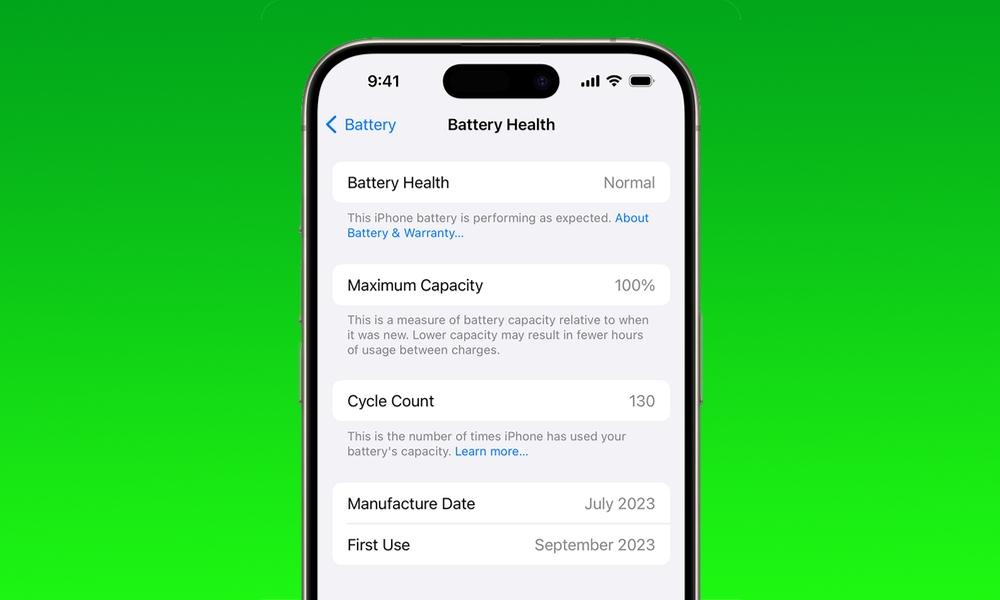iOS 17.4 Reveals Longer Battery Lifespan for iPhone 15 Models

Toggle Dark Mode
As is typical for a late-cycle beta release, today’s fourth iOS 17.4 developer beta is mostly devoid of significant changes. However, Apple did sneak in an interesting surprise in its Battery Health section, simultaneously announcing that the batteries in the iPhone 15 and iPhone 15 Pro models could retain their health for twice as long as anybody first expected.
All lithium-ion batteries age and lose capacity over time. While some things, like excessive heat, can shorten that lifespan, the typical cause of deteriorating battery health is simply how often you charge it. Even under optimal conditions, your rechargeable battery will eventually wear out. That’s just physics and chemistry at work.
This lifespan is measured in terms of “charge cycles,” which refers to the number of times you can charge a battery from zero to 100% before it can only retain about 80% of its original capacity. For years, the lithium-ion batteries used in Apple’s MacBooks and iPads have been rated for 1,000 charge cycles, while the batteries in smaller devices like the iPhone and Apple Watch have been rated at only 500.
For most iPhone users, 500 charge cycles should mean that your battery will last you for about two years before it starts to noticeably deteriorate since you’re not using an entire charge cycle every day unless you regularly end the day with a dead iPhone. Instead, each recharge counts as a partial charge cycle, and these add up over time.
Unfortunately, as we mentioned earlier, there are other factors that can prematurely age your battery. Excessive heat is at the top of that list, but keeping your battery topped up to 100% all the time isn’t good for it, either.
However, today’s iOS 17.4 beta came with the surprise news that the batteries in the iPhone 15, iPhone 15 Plus, iPhone 15 Pro, and iPhone 15 Pro Max have been retested and rated for 1,000 charge cycles — twice as many as older iPhone models.
Apple told various media outlets that it had tested the iPhone 15 batteries through 1,000 discharge and recharge cycles under specific conditions that it believes are typical of how most people use their iPhones and that it’s also made improvements to the power management system in the iPhone 15 models.
These improvements are apparent in the battery health features exclusively available on Apple’s latest models. For example, the iPhone 15 has the unique ability to stop charging at 80% to help extend battery health. This is a new feature that prevents your battery from ever rising above 80%, unlike the Optimized Battery Charging feature that Apple introduced in iOS 13, which simply defers topping up the battery to 100% until an hour or so before it thinks you’ll take your iPhone off the charger.
Apple also updated its support document on battery performance today to reflect this change:
Batteries of iPhone 14 models and earlier are designed to retain 80 percent of their original capacity at 500 complete charge cycles under ideal conditions. Batteries of iPhone 15 models are designed to retain 80 percent of their original capacity at 1000 complete charge cycles under ideal conditions.
Apple
The iPhone 15 battery management system can also show additional information about your battery, which can now be found in iOS 17.4 in the Settings app under Battery > Battery Health . This includes the number of charge cycles your battery has already been through, plus the date it was manufactured and the date it was first used. Battery cycles have long been available on the Mac, where they can be found in the System Information app (which you can quickly get to by Option-Clicking on the Apple logo and selecting it from the menu); however, the iPhone 15 is the first iOS device to show this information.






